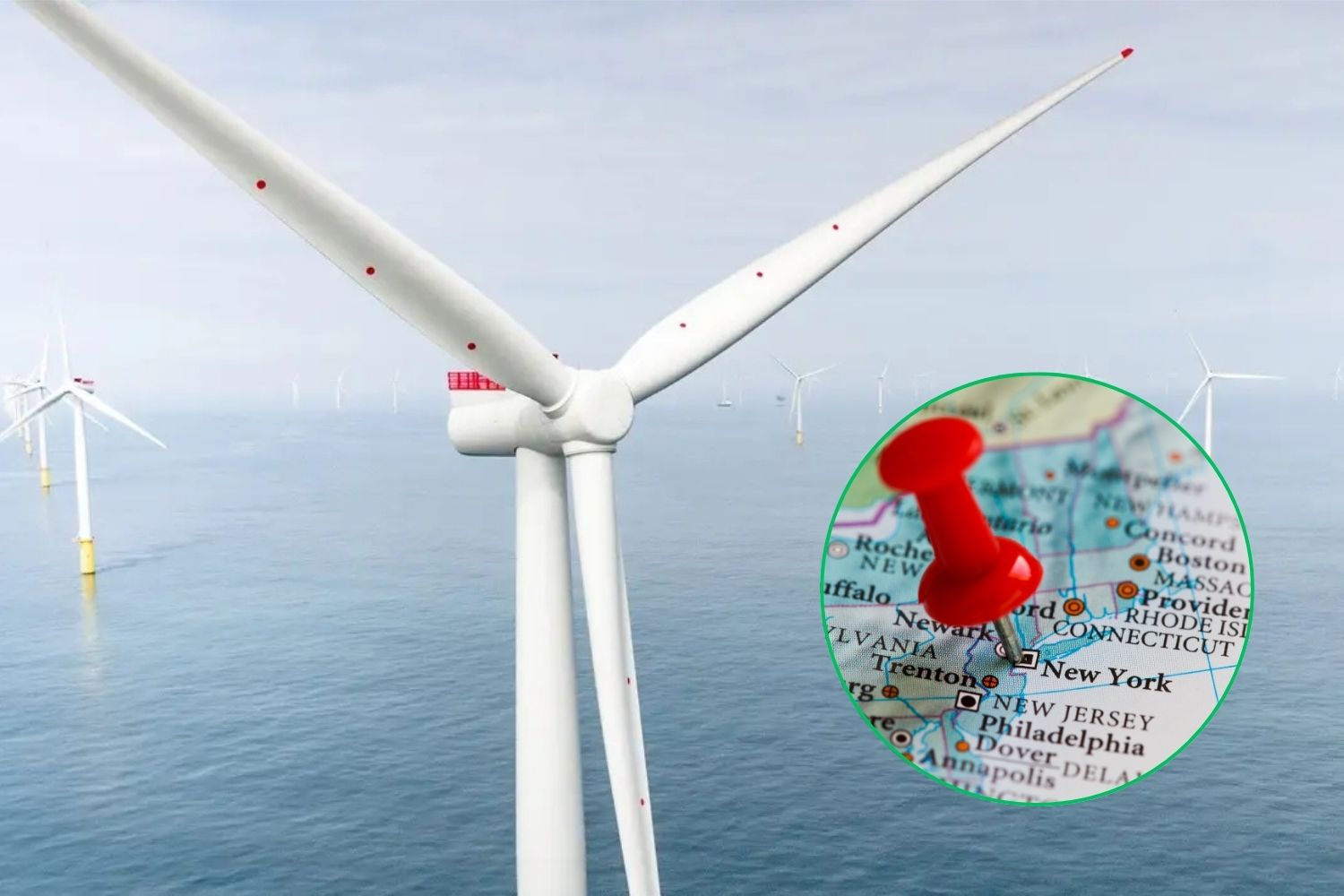Empire Wind resumes construction off NYC’s coast after a federal suspension. The offshore wind project will power 500,000 homes by 2027, signaling a major shift in U.S. energy policy.

@equinor
Table of contents
After more than a month of uncertainty, construction has officially resumed on Empire Wind, the first large-scale offshore wind project set to bring clean energy to half a million New York City homes. Spearheaded by Empire Offshore Wind LLC—a company under the control of Norwegian energy giant Equinor—this massive undertaking is not just another green infrastructure play. It’s a foundational shift in how the Big Apple powers its future.
Empire Wind 1: the numbers behind the turbines
Empire Wind 1 is expected to be up and running commercially by 2027, with a contractual capacity of 810 megawatts (MW)—enough to power around 500,000 households in one of the world’s busiest cities. The site, purchased by Equinor back in 2017, spans 80,000 acres (about 32,375 hectares) in the Atlantic Ocean and will host 54 V236-15.0MW turbines, manufactured by Danish wind powerhouse Vestas.
Last summer, a 25-year agreement was locked in at a fixed price of $155 per megawatt-hour, a benchmark that aligns with the broader trajectory of the U.S. offshore wind sector. By the end of 2024, Equinor had secured over $3 billion in financing, with total investments—including infrastructure at the South Brooklyn Marine Terminal (SBMT)—set to hit nearly $5 billion.
That’s not just numbers on a spreadsheet. The early phase of redevelopment alone has already created jobs for over 1,000 workers. These aren’t hypothetical green jobs. They’re union-backed, boots-on-the-ground roles that feed real families in the New York metro area.
A bureaucratic pause, then a presidential push
Then came the unexpected brake: on April 16, 2025, the Bureau of Ocean Energy Management (BOEM) abruptly suspended construction, citing procedural and regulatory issues. But by May 20, after a flurry of closed-door meetings and pressure from multiple sides, the hold was lifted. Equinor and federal, state, and local authorities reached a deal that allowed the project to move forward.
“We’re pleased that construction on Empire Wind can now resume,” said Anders Opedal, President and CEO of Equinor. “This project underscores our commitment to delivering energy while also supporting local economies and creating jobs. I’d like to thank President Trump for finding a solution that saves thousands of American jobs and ensures continued investment in U.S. energy infrastructure.”
Yes, that President Trump. His support in this case—perhaps unexpected given his past views on renewables—was instrumental in clearing the regulatory fog. It’s a rare example of bipartisan interest aligning around energy independence and job security.
What happened to Empire Wind 2?
Originally, the vision for Empire Wind included a second phase, Empire Wind 2, with an additional 1,260 MW of capacity. But that plan hit a wall. In January 2025, Equinor and its then-partner BP announced the termination of their OREC (Offshore Renewable Energy Certificate) agreement for the second phase.
In the aftermath, the partnership was restructured: Equinor took full control of the Empire Wind project, while BP shifted focus to other assets. The move reflected broader instability in the American offshore wind sector, which has been squeezed by inflation, supply chain chaos, and political turbulence.
Still, Empire Wind 2 isn’t off the map. It remains, in Equinor’s words, a “shovel-ready project”, just waiting for the right market conditions. Whether that means new state incentives, federal grants, or simply a shift in energy prices—it’s likely not gone for good.
More than a wind farm: a symbol of transformation
Empire Wind’s 810 MW of clean energy will be delivered through those 54 towering turbines, each one a marvel of Danish engineering. But this isn’t just about megawatts and steel. It’s about reshaping the American energy grid, starting from the coast of Brooklyn.
More than 30% of the project is already complete, and if all goes according to plan, offshore installation will begin in 2025, with full commercial operation achieved by 2027. It’s an aggressive timeline, but one that speaks to the urgency of the moment.
As the U.S. struggles with climate policy gridlock and aging fossil infrastructure, Empire Wind offers a rare beacon: sustainability, energy sovereignty, and economic development, all anchored 15 miles off the coast.
In the end, this is about bringing Atlantic wind directly into New Yorkers’ homes—a literal and symbolic breath of fresh air.
Source: Empire Wind
